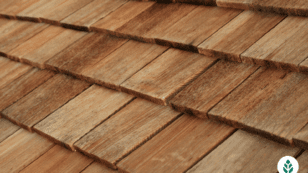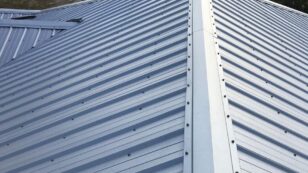

Roof Eaves: Everything You Need to Know (2024 Guide)
In this EcoWatch guide on roof eaves, you’ll learn:
- What is a roof eave?
- How can you benefit from having a roof eave?
- How you can protect your home foundation and exterior walls?
- What are the different styles of roof eaves?
This guide has helped many homeowners learn about the pros and cons of roof eaves and assists them in deciding if roof eaves are the right option for their home. Enter your zip code below to receive a personalized quote on roofing companies near you.
Each product and or company featured here has been independently selected by the writer. You can learn more about our review methodology here. If you make a purchase using the links included, we may earn commission.
If you’re looking to learn about roof eaves — what they are, the different styles and benefits of each, you’re in the right place.
Roof eaves often get overlooked, especially if homeowners believe that parts of the roof are meant for decorative purposes only. In actuality, roof eaves serve important purposes and help keep your home safe and energy-efficient.
In this guide to roof eaves, we’ll answer the questions: What are roof eaves? What purpose do they serve? How does sustainability factor into roof eaves? We’ll also explain the different kinds of roof eaves so you can make the right choice for your home.
What Is a Roof Eave?
An eave is the portion of your roofing system that hangs over the side of your home. Many people refer to it as an overhang, as it consists of a portion of your roof that extends beyond your vertical walls.
The eave on your home is the entire overhang, and it’s made up of:
- The top part of your roof, supported by common rafters in most cases that are connected to the ridge board
- The fascia board, which is the vertically oriented board at the edge of the roof to which gutters typically get attached
- The soffit, which is the underside of the roof overhang
Many homes — especially two-story homes with gable roofs — have eaves on just two sides of the house, while the other two sides have no eaves. Homes with hip roofs or dutch roofs — which are more common on one-story houses and on Dutch colonial-style homes — commonly have eaves on all four sides.
To learn more about roof eaves and their parts, check out this video:

Power Home

Average cost
Pros
- Positive industry reputation
- Lifetime or lengthy warranty
- 10+ years of experience
- Positive customer reviews
- Uses eco-friendly materials
- Well-trained, certified installers
- Variety of roofing styles available
Cons
- Limited variety of roofing materials
- Short or nonexistent warranty
- No financing information available
- Expensive
- Little information available on company website

Erie Home

Zero Down - 18 months same as cash with minimum monthly payment
Average cost
Pros
- Lifetime or lengthy warranty
- Widespread availability
- 10+ years of experience
- Positive customer reviews
- Uses eco-friendly materials
- Financing options available
- Well-trained, certified installers
- Uses durable materials meant to last
- Variety of roofing styles available
Cons
- Limited variety of roofing materials
- Expensive

Aspen Contracting

Average cost
Pros
- Positive industry reputation
- Lifetime or lengthy warranty
- Widespread availability
- 10+ years of experience
- Positive customer reviews
- Financing options available
Cons
- Little information available on company website
What Is the Purpose of Eaves?
Eaves are part of a home’s architectural design, and while they do add curb appeal to your property, they also have quite a few functions that make them a necessary staple of home design. We’ll discuss the different purposes of roof eaves briefly below.
Shading and Energy Efficiency
Eaves overhang your exterior walls and block sunlight that would otherwise enter through your windows, so they can improve the energy efficiency of your home. In particular, wide eaves are used in hot, sunny areas, to help keep homes cooler.
Ultimately, long eaves provide a natural way to reduce your reliance on your air conditioning system. Any bump to home energy efficiency means fewer fossil fuels burned to generate electricity (provided you don’t have solar panels installed on your home).
Control Wind Loading
The type of eave you have installed on your home will help control wind loading, which is the force applied to different parts of your structure in high winds, especially in tornadoes, hurricanes and tropical storms.
The eave style should be dependent on the location of the home and the extreme weather that’s common in the area.
For example, long eaves will create problems with wind uplift, which can cause your roof to pull off of your home in the presence of intense wind. However, they might be perfectly suitable in areas that aren’t prone to strong winds.
Protect Your Foundation and Exterior Walls
Another important role that your house eaves play is directing runoff from your roof away from your foundation and the side of the building.
For homes without eaves, precipitation falls off of the sloped roof and is blown into the surrounding trim or exterior walls or collected by the soil around your foundation. The former can increase the likelihood of leaks.
Water collecting near your foundation can lead to several issues as well, including:
- Structural damage to your foundation
- Leaking through the foundation, resulting in water damage
- An increase in humidity in your basement or crawlspace
- Mold growth in your under-home area
- Pest infestation in or around your home
Provide Space for Gutter Systems
Eaves also provide a convenient place to install gutters. Most gutter systems are screwed into fascia boards, which make up the outer wall of the eave and sit at a 90-degree angle to the soffits.
Not only do gutters attached to fascia boards look aesthetically pleasing, but they also provide the ideal position for collecting rainwater at the ends of your roof slopes.
What Are the Benefits of Eaves?
We’ve covered shading, wind control and protecting the foundation of your home, but eaves provide additional benefits, including:
- Providing convenient places for mounting outdoor lighting and security cameras
- Providing protection from UV damage for interior furniture
- Providing coverage from rain or snow when entering or leaving your home
- Improving the curb appeal of your home, depending on its design
What Are the Downsides of Eaves?
Of course, there are some downsides to eaves as well, most of which are dependent on the style of eaves your home has.
Many styles can create issues with the roof uplifting in areas where strong winds are common. In areas prone to severe weather, abbreviated eaves or no eaves at all are preferred.

Open eaves can also leave your home prone to insects, rodents and birds, all of which can take up residence in the undisturbed area. Wasps, squirrels, birds and other animals can often see open eaves as a great place to build nests.
Even closed eaves can be an issue for pests, as they provide wood for carpenter bees. Many homeowners choose polyvinyl chloride (PVC) soffit covers to prevent these issues on closed and boxed eaves.
What Are the Different Styles of Roof Eaves?
There are two primary styles of eaves, but most homeowners will have four choices when it comes to the type they want on their home. We’ll briefly explain each of the styles below.
Open Eave
An open eave — also called an exposed eave — is one that doesn’t have a cover over the soffit area, so you can see the roof rafter tails and the roof sheathing above them when you look up at the eave from underneath. Open eaves are the most affordable and provide the basic benefits of eaves, including:
- Directing water away from your foundation
- Allowing you to open your windows while it’s raining without worrying about water getting inside
- Shading your home’s interior from the harsh sunlight
However, an open eave can also provide more space for pests to take up residence, and they don’t look as nice as closed eaves in most cases.
Closed Eave
A closed eave — often called a soffited eave — is one where the soffit area is enclosed. This can be done with a variety of materials, the most common of which include wood panels or wood panels covered by a vinyl material or PVC.
Closed eaves provide all the benefits of open eaves, but they have the added benefit of improved curb appeal through a more complete-looking architectural style and better protection from rodents, wasps and wood-destroying insects (WDIs) like carpenter bees.

Boxed Eave
A boxed eave is a type of closed eave that is a bit more decorative. Rather than the underside of the eave just being enclosed, it’s enclosed with trim and decorative pieces to create a box-like structure on the underside of the eave.
Boxed eaves are a bit more expensive than standard closed eaves, but most homeowners prefer the appearance.

Abbreviated Eave
An abbreviated eave — as is often seen on gambrel roofs and flat roofs — is one that has minimal overhanging eaves and is typically closed, so this style is usually best for areas where strong winds put roofs with normal eaves at risk of lifting off of the house.
Abbreviated eaves still provide some protection from rain for your foundation and windows, and they also provide a convenient place for installing exterior lights, cameras and soffit vents.
If you’re interested in getting a new roof or roof repair, we recommend researching the best roofing companies and connecting with the following companies:
FAQ: Roof Eaves
Below, we’ll answer some of the most common questions we see about roof eaves and how they function in the home.
The eave of a roof is the entire portion that overhangs the side of your home, so the soffit and fascia are parts of the eave. The soffit is the underside of the eave, and the fascia is the vertical section at the roof edge that bridges the gap between the soffit and the roofing shingles above.
An eave is an extension of your roof that overhangs the side of your home. An eave is the same thing as a roof overhang, and the terms are often used interchangeably.
Eaves serve many purposes, including keeping runoff away from your foundation and exterior siding, providing a space to install exterior lights and gutters and adding curb appeal to your home. The type of eave can also help determine how well your roof holds up to extreme climates, as it controls wind load on your structure.

 233k
233k  41k
41k  Subscribe
Subscribe 

















